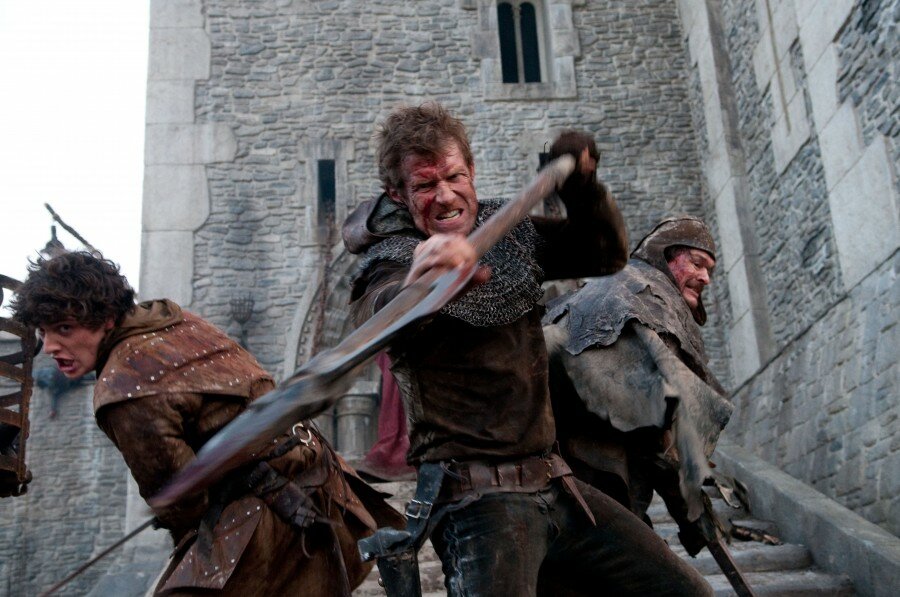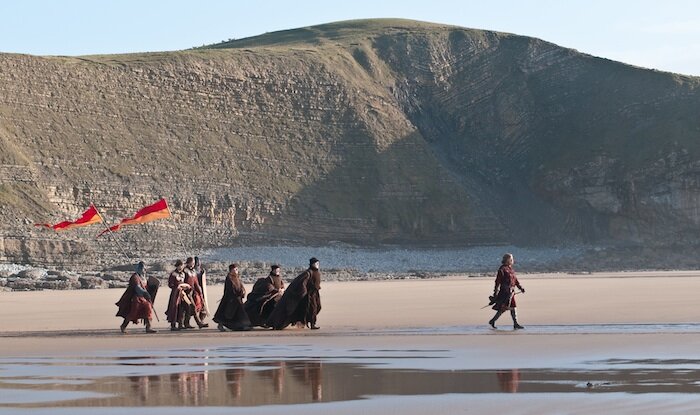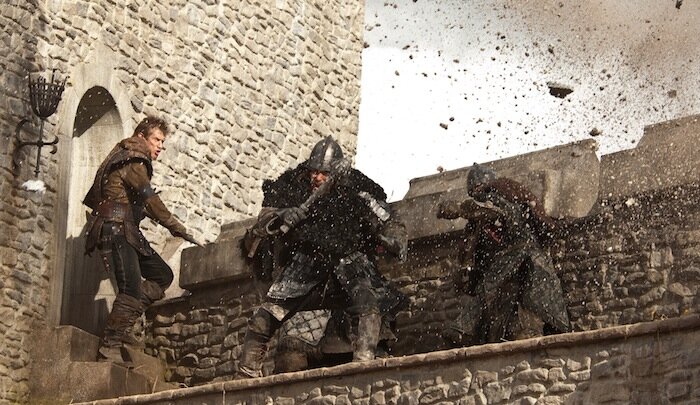Login
iFlicks on Twitter
| Interview: Jonathan English (Ironclad) |  |
 |
| Written by Ivan Radford |
| Wednesday, 02 March 2011 09:09 |

If you like swords, castles and bloody history, Jonathan English is your man.
How did Ironclad first come about? Are you a history fan? Yes, I am. I love movies from that period, such as The War Lord starring Charlton Heston, which I saw as a kid. I really love action adventures. But I’m also a castle nut. For some reason, I had never been to Rochester castle, even though I grew up in the Surrey/Kent area. About 4 years ago, I went there and I was really struck by the building and the ruins – the Norman keep is still standing and feels more like a battleship than a castle. Then I started reading about this particular battle, how the men survived on horse-meat and water. It was one of those classic moments where I thought "Wow, that would make an amazing film!"
It was. It took 14 weeks to build! There was a moment I went up into the hills above that area, quite a long way away, and looking across South Wales you could see the construction. It was the largest building in the entire countryside. It was great to build it with Dragon Studios; they have acres of land and we really took over the space.

Well, a lot of the characters are entirely based on fact. King John (Paul Giamatti), obviously, and Baron Albany (Brian Cox), and Rochester castle was indeed run by Sheriff Cornhill (Derek Jacobi), who was married to an 18 year old girl. A lot of the film's events are from the history books: they cut off rebels' hands and feet and catapulted bodies over the wall. The most significant incident is digging the mine under the castle. King John very famously dictated the memo: "Bring me 40 pigs, at least good for eating." And then he burned the pigs in the mine and collapsed the side of the castle. When you go to Rochester, you can see the section that was rebuilt. It's really amazing.
It’s a combination. I mean, we built the whole thing as a full-size castle, although not to its full height – in real life, the castle is 120 feet! The castle that collapses is a miniature, but we built a very large miniature, about 18 foot high, and filmed it at high speed and then that was digitally composited onto the set. The trebuchets were all real as well, although for the three for King John's army we just built one and doubled it up. When we built the trebuchet, it was the largest in England. And it really did work. It could hurl a large object across the river. It was… impressive!

They're all actors I loved and admired and wanted to work with, particularly Brian Cox. They just bring so much gravitas to this kind of film. The older characters are the real historical people, Charles Dance and Derek Jacobi. The younger heroes – James Purefoy, Jason Flemyng – are fictional, because the rebels were all commoners, so not much is known about them. But keeping those real historical characters was a way to secure the interest of a lot of heavyweight actors. You go to Charles Dance to ask him to play the Archbishop of Canterbury who helped force King John to sign the Magna Carta and he’s going to be interested, you know. They love these stories. And a lot of the actors love the violence too!
Absolutely! Actors love sword fighting. I think the quote is "actors love sword fighting, and they only thing they love more is sword fight training!" (Laughs) We had a guy called Richard Ryan who's a very experienced choreographer. He did stuff like Troy, that epic fight between Brad Pitt and Eric Bana, and he did the Batman films, the Sherlock Holmes films... He’s kind of a legend.
The action was a big part of the project – I didn’t want to shy away from it like lots of independent films, particularly British ones, where the fighting gets diluted and you end up with a period drama. That was part of my vision for the whole project, that when the first battle came, it would be like the opening of Saving Private Ryan. You know, I loved war movies like Where Eagles Dare, but when I saw Saving Private Ryan it was like "Oh my God!" and I didn’t feel an experience like that had even been made with medieval warfare. It was a challenge with the resources available.

Our cinematographer was David Eggby, an Australian guy who shot the original Mad Max, and that was the reason I hired him. And the camera operator was Florian Emmerich, who shot the original Bourne films. It was fascinating, because I got to have conversations about how those films were made, but also bring in Mad Max’s energy and Florian’s camerawork. It was an experiment to combine that style, which is something we associate with modern action and docudramas, with a medieval film. We shot a lot on the Canon D5: we put one guy in a costume amongst the extras on the battlements, just holding the camera. He's in a lot of shots and there’s a lot of that footage in there. It’s edgy and visceral. It puts you right there. That’s what I was trying to do. Put you right there into the heart of the battle.
I haven’t counted them, but I wouldn’t be surprised! There are that many only because there were that many companies financing the movies. These days, everyone who finances asks for one or even two executive producer credits and it’s very hard to say "No, we don’t want that many million dollars because we don’t want to call you an executive producer!" At the time, it was the largest financial closing that had been made in London on an independent film. One area of the budget that I’m not proud of is the legal bill! (Laughs)
I do love historical films. First and forement, I love action adventure films. I would be happy to do another historical action adventure film, but what I really want to do is a contemporary action adventure. I am actually developing a contemporary action adventure movie right now but it’s not announced yet. It’s very much in the style of the Bourne movies or Taken and it's set in Europe. I hope that's the next thing I end up doing.
Ironclad is released in UK cinemas on Friday 4th March. Check out the Ironclad trailer - or our very positive review.
Tags:
|
|




